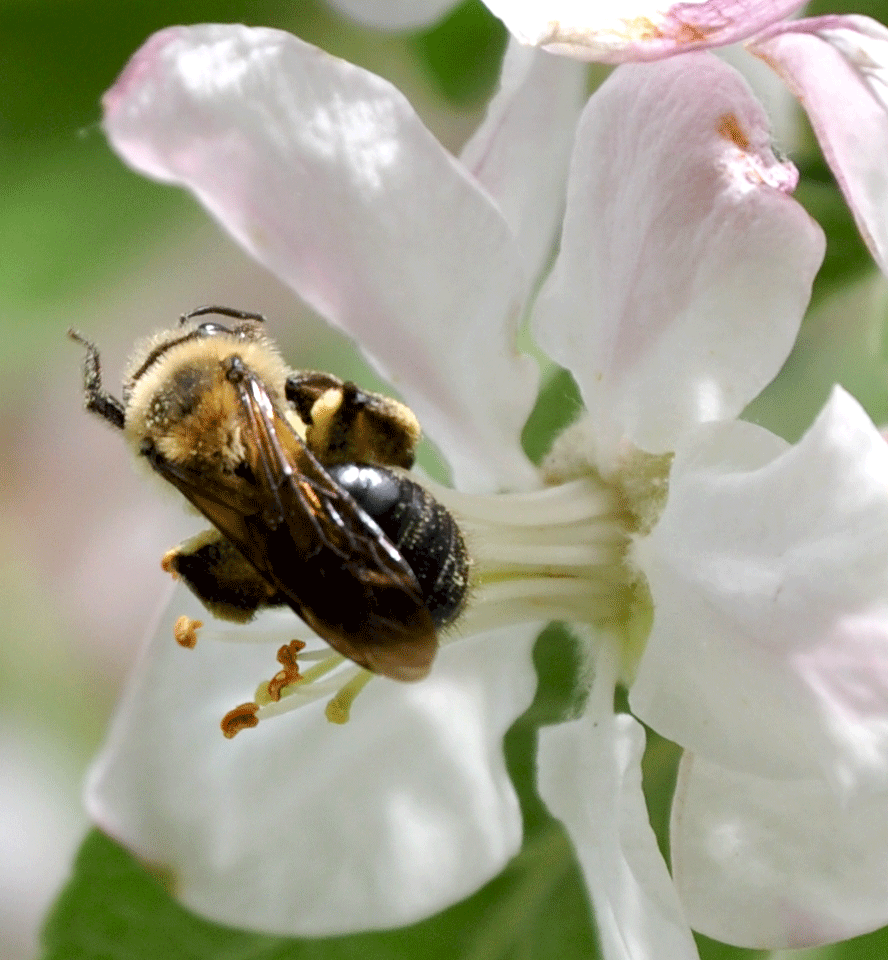
Update: How is this crazy weather affecting plants, pollinators and farmers?
The fruits of 2012 have already arrived in Wisconsin! Strawberries are ready to be picked about 20 days earlier than usual. Farmers and consumers have been wondering how the spring temperature swings and frosts will affect this year’s crop yield. My field work takes me to apple orchards throughout Wisconsin, so most of what I know first-hand pertains to apples and other tree fruits. On average, the apple crop in southern Wisconsin looks to be about half of the 2011 crop; fruit set at my study sites was 17% in 2011 and only 8.5% for 2012. This is a result of both spring frosts and cool, windy weather during pollination (bees will not fly and pollinate in cool or windy weather).

However, yields will vary both within and across orchards based on a few factors: apple variety, elevation and slope of orchard, and location of the orchard (latitude and proximity to the Great Lakes). In general, earlier-blooming apple varieties were hit harder by the frost, so you can expect fewer Macintoshs, Galas and Ida Reds. Orchard blocks at higher elevations, such as ridge-top orchards in Gays Mills, fared better as did orchards further north, where a later bloom meant that apple blossoms were exposed to fewer nights of frost. In fact, apples in Door County entirely escaped the multiple nights of frost in April. Apples, of course, are not the only fruit affected by the spring weather. Tree fruits that bloom earlier than apples, such as cherries, plums and apricots, generally experienced even greater frost damage, with farmers reporting losses of 50-90%! So while we can expect a smaller, but still substantial apple crop, other tree fruits will likely be in even shorter supply.
Posted by Rachel Mallinger
This article was posted in Lab News.